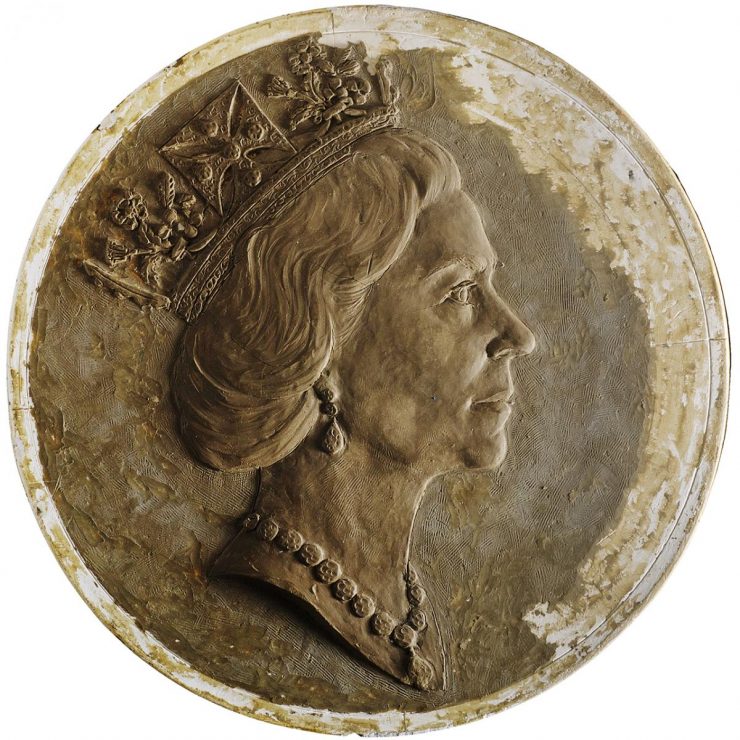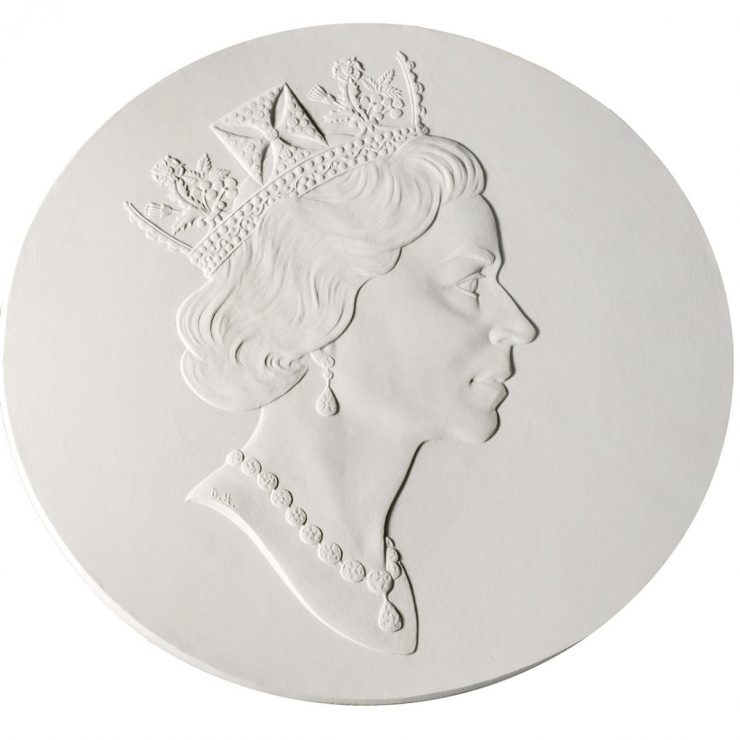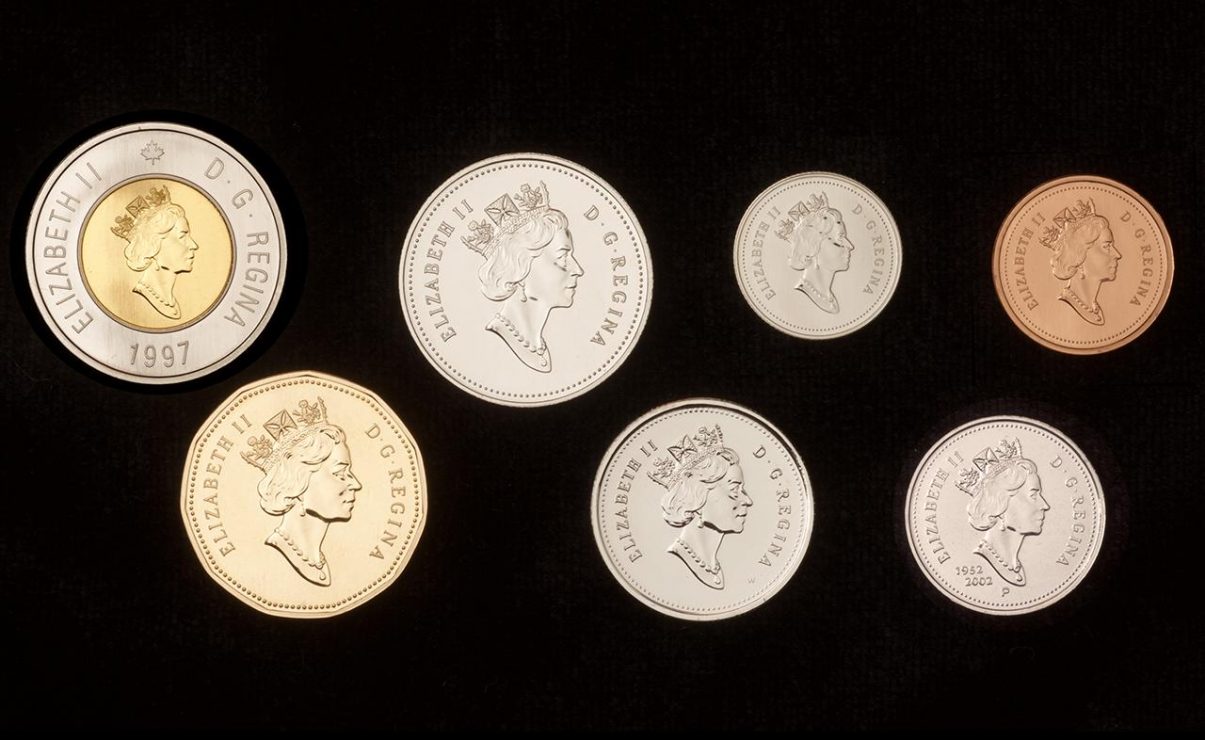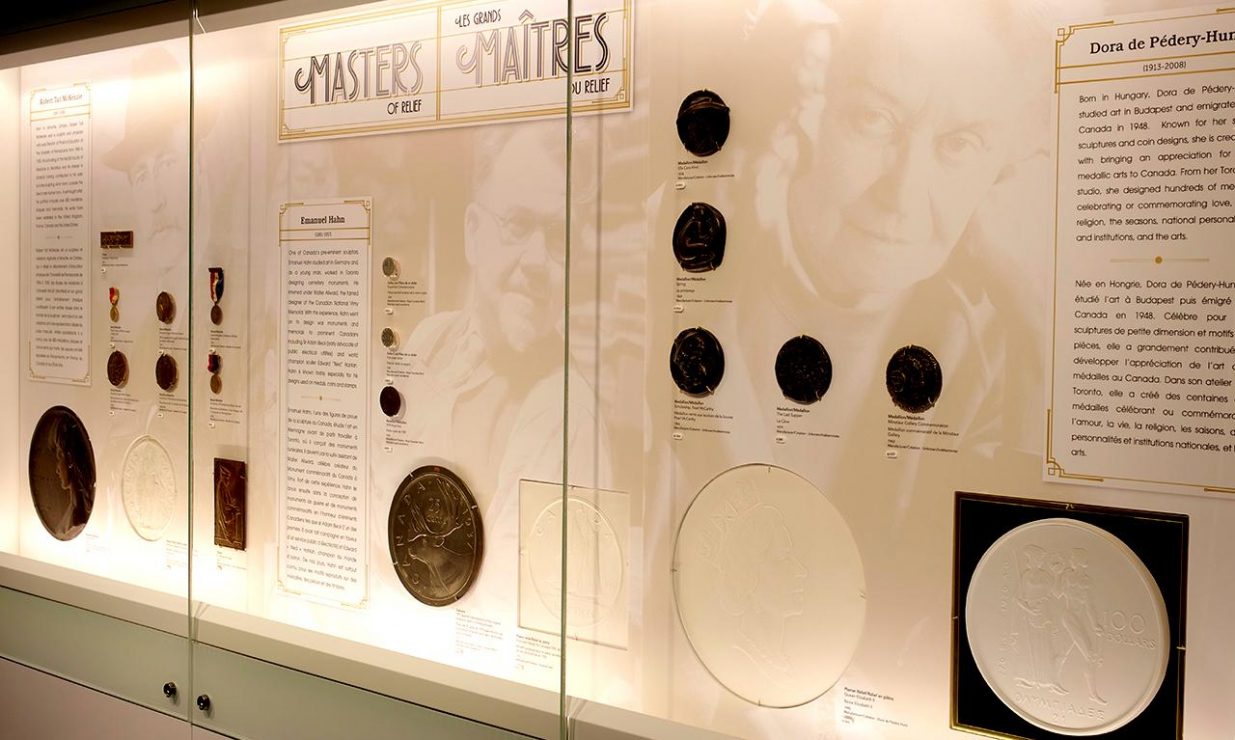Sculptor Dora de Pédery-Hunt
You will not see Dora de Pédery-Hunt’s signature on any coin, but you will see her initials on the Queen’s shoulder.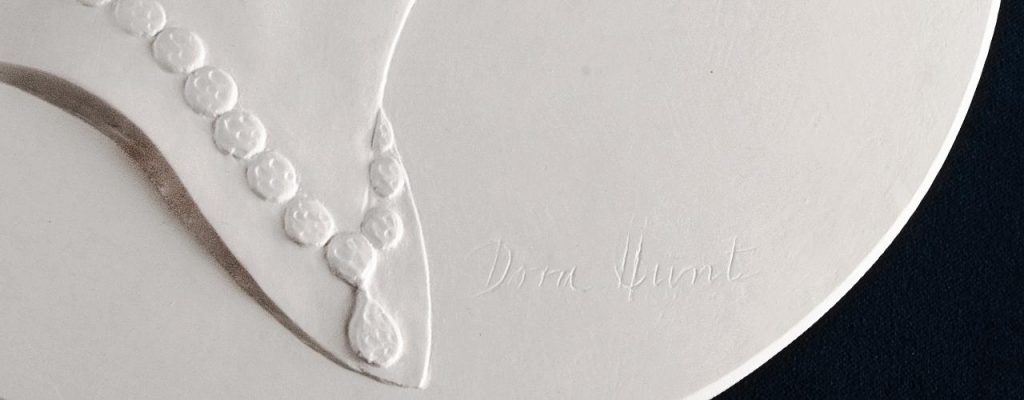
Limited Edition plaster reproduction of working model, #21 of 275. (NCC 2009.020.003)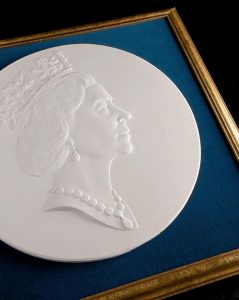
Dora de Pédery-Hunt’s work is as familiar as the change that jingles in your pocket. In all likelihood, you have come in contact with her work while using coins to pay for your morning cup of coffee. Dora de Pédery-Hunt was the first Canadian artist to design and sculpt an effigy of Queen Elizabeth II for coinage. Incidentally, this was the first time someone other than a British citizen had designed an official depiction of Queen Elizabeth II for this purpose.
When the Royal Canadian Mint (RCM) selected Dora’s design, she painstakingly began working on a clay model. All of the details had to be carefully considered, as the depth of the relief had to be suitable for producing coins. This model was then captured in plaster, where additional refinements could be made. Any errors could easily be corrected at this stage with the addition of more plaster. The size of the plaster is usually several times larger than the actual coin in order to capture all of the fine details.
At the time, there were many steps between the plaster model and the production of coins. Today, the process has been significantly refined. The plaster model is scanned in 3D and any final corrections or enhancements can be made digitally. Guided by this digital file, an engraving machine cuts the design into a piece of steel at the correct size of the coin. Known as a reduction punch, this piece of steel is then used to make the dies which will actually strike the coins. The tremendous pressure used to strike the coins wears down the dies, so the mint will periodically use the punch to create new dies.
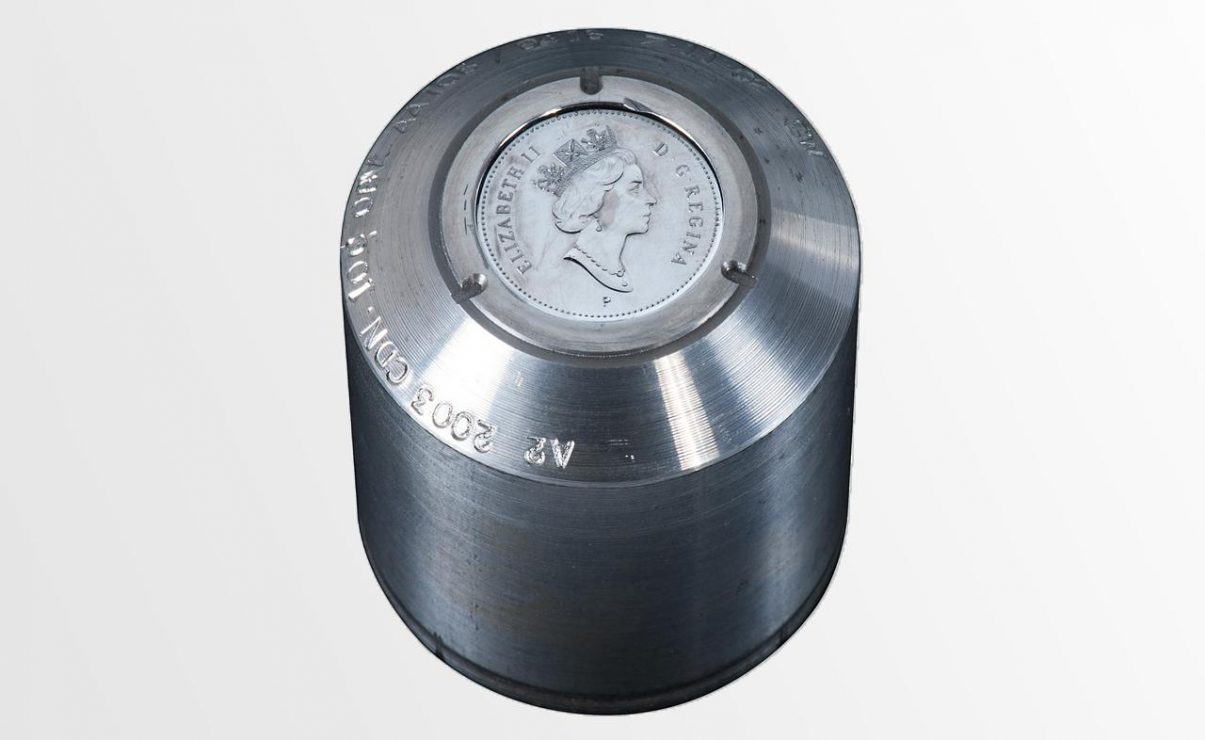
In 1999, the “P”, under the portrait on this punch, was added by the RCM to indicate a change in metal from nickel to multi-ply plated steel. (NCC 2010.058.006)
This portrait has appeared on all Canadian coins minted between 1990 and 2003.
The Museum Blog
Johnson’s Counterfeits
By: David Bergeron
Johnson’s entire family, two girls and five boys, was involved in the counterfeiting operation: dad made the plates, the daughters forged the signatures and the boys were learning to be engravers.
The Reluctant Bank Note
By: Graham Iddon
Among 1975 $50 bill’s various design proposals were three images, three thematic colours and even three printing methods.
Nominating an Icon for the Next $5 Bank Note
By: Graham Iddon
Using a Bank of Canada Museum lesson plan, nearly 200 students told us who they thought should be the bank NOTE-able Canadian on our new $5 bill.
The “Streak of Rust” and the King of Newfoundland
By: David Bergeron
Reid was on the verge of ruin, yet insisted on continuing railway construction. Suffering huge losses, and with no credit or cash resources, Reid issued wage notes to pay his employees.
Retired Cash
By: Graham Iddon
In January 2021, 17 of our old bank notes will lose their legal tender status—what does that mean?
The Fisher, the Photographer and the Five
By: Graham Iddon
There’s little doubt that the BCP45 is lovingly preserved today partly thanks to being immortalized on this beautiful blue five-dollar bill.
Where Futurists Feared to Tread
By: Graham Iddon
Among the laser pistols, hover cars and androids of science fiction, there’s an elderly elephant in the room: money.
